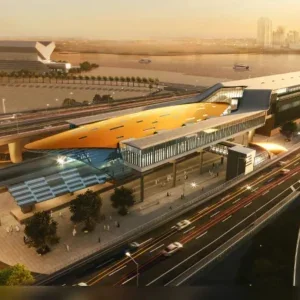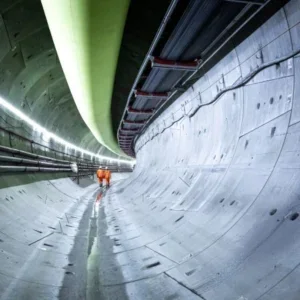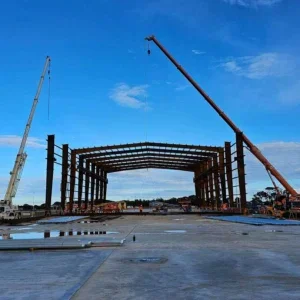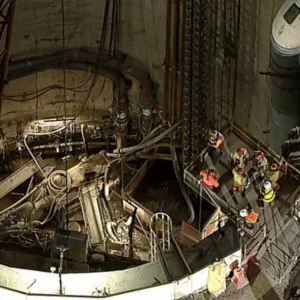Worker safety concerns have led to the twin 4.5-mile (7.2km) long Seymour-Capilano tunnels in Vancouver, Canada, being put on stop since early January.
Contractor Bilfinger-Berger had been driving the tunnels for Metro Vancouver since mid-2006, but the contractor suspended works on the raw water tunnel (RWT) at 2.5 miles (4.1km) CH on January 7 this year. Excavation was also suspended on the treated water tunnel (TWT), which was being advanced with a 984ft (300m) lag behind the RWT, on January 10.
Reports said that by January 14, ten incidents of falling rock had been reported, three of which resulted in injury to a worker; one resulted in a lost time injury. Seven of these incidents occurred in January.
After receiving the incident reports, WorkSafeBC, the British Columbia workers’ compensation board that monitors compliance with occupational safety regulations, directed the contractor to halt work until the hazardous conditions had been eliminated or controlled. Weak altered rock conditions are said to have resulted in broken and unstable ground that is difficult to support.
A spokesman for Metro Vancouver told T&TNA in May: “Worker safety is a prime concern for Metro Vancouver and is the key issue to be addressed so that work can resume.”
He added that Hatch Mott MacDonald, Metro Vancouver’s engineer for the project, has developed a remediation plan to address the ground conditions, but that it is “a complex geological condition and requires extensive assessment before work can safely resume.”
T&TNA was also told that an approximately 164ft (50m) section of the RWT was affected, but that work on the TWT was stopped as a precaution, in case similar conditions were encountered. Press reports said Bilfinger-Berger had rejected an initial plan from Metro Vancouver engineers and was reviewing a second plan.
With work suspended, cordons have been established to within 197ft (60m) of the two Robbins 12.5ft (3.8m) diameter TBMs that had been advancing the tunnels at 33-66ft (10-20m) a day. Several workers have been temporarily laid off while the work is stopped. Doug Neden, an engineer for Metro Vancouver, told local press that there were 90-100 workers on the project (including construction site and office staff) and that 30 people were laid off in March. Robbins told T&TNA that its personnel had been removed from site.
Outside the cordons, work is underway in both tunnels on final support and lining. This includes steel mesh and bolts as well as shotcreting.
The Metro Vancouver spokesman told T&TNA: “It is likely that the delays in tunneling will result in additional costs and schedule impact. At this stage, it is premature to determine what the costs and schedule impacts are and how those additional costs will be assigned.”
He noted: “Metro Vancouver continues to be in discussion with the contractor Bilfinger-Berger so that an acceptable solution can be implemented.”
Bilfinger-Berger confirmed the suspension of work due to safety concerns, but was unable to add further details pending resolution of plans.
Pacific Liacion & Associates / SNC Lavalin are responsible for construction management, Hatch Mott MacDonald is providing resident engineer services and Golder Associates is supplying geotechnical services for the project.
Once completed, the project will see treated and untreated water run through the contraflow tunnels underneath Grouse Mountain between the Capilano Lake Reservoir and the filtration plant in the Lower Seymour Conservation Reserve (LSCR).
In its last construction update, Metro Vancouver stated the final tunnel alignment was selected based on 12 months of test drilling. Located in bedrock 525-2,100ft (160-640m) below the surface, “this alignment was selected based on the quality of the bedrock and anticipated tunneling conditions”.
Tunneling had been expected to be complete by mid-2008 when the project was awarded in 2004.
Route of the twin Robbins TBM drives One of the 3.8m diameter Robbins TBMs







